Sales reps only spend 39% of their time selling or engaging with prospects and customers. The rest is spent on administrative tasks, travel, and reporting. This highlights a major challenge sales leaders face: improving sales productivity and performance.
For six consecutive years, boosting sales productivity has been the number one concern for sales teams, and the problem isn’t going away. According to SPOTIO’s State of Field Sales report, the root cause is clear: sales reps spend too much time on manual tasks.
Improving sales productivity starts with understanding that it’s not for a lack of effort, but how that time is divided.
In this post, we’ll show you how to boost sales productivity by automating repetitive tasks, strategically assigning sales territories, prospecting smarter, and more. Streamlining these non-selling activities frees up more time for connecting with prospects and closing deals.
Table of Contents
What is sales productivity?
What causes sales inefficiency?
Key pillars of sales productivity
19 strategies to increase sales productivity
Increase your sales productivity with SPOTIO
What Is Sales Productivity?
Sales productivity is the balance between achieving the best possible sales performance while minimizing the resources used. These resources can include anything from team members’ time to the company’s budget.
You can measure sales productivity by assessing how effectively your sales team generates revenue compared to the resources invested. Taking a structured and focused approach to sales productivity helps you:
- Reduce the sales cycle length
- Improve alignment between sales and marketing teams
- Streamline administrative tasks
What Causes Sales Inefficiency?
Inefficiency is a reality for many field sales reps. There are an overwhelming number of obstacles preventing them from operating at peak efficiency, including:
Strategy and Process Issues
- Inconsistent sales strategies and processes
- Poorly established ideal customer profiles (ICP)
- Failing to establish sales activity priorities
- Poor route planning and scheduling
- Poor sales funnel management resulting in lost leads
- Inefficient sales tools or refusal to adopt modern technology
Communication and Alignment Problems
- Poor communication between sales and marketing teams
- Lack of alignment and communication between sales, marketing, and operations
- Lack of alignment to sales objectives and unclear sales targets
- Random, poorly planned sales coaching and training sessions
Workplace Culture and Environment
- Excessive performance pressure to exceed targets
- Large amounts of turnover and constant change
- Continuous distractions from outside and irrelevant sources
- Sales cultures that breed negativity
For a productive sales team, you need to identify these obstacles and create a plan to overcome them. Let’s take a closer look at the foundational elements of boosting sales team productivity.
Key Pillars of Sale Productivity
Improving sales team productivity begins with these three foundational pillars:
Consistency
A clear, repeatable sales process ensures that sales productivity makes it easier for every sales representative to follow best practices. How a sales rep’s day is scheduled and structured also goes a long way. Use what works and share those strategies with the entire team.
Concentration
Distractions are always pulling us away from our daily goals. Encourage sales team members to block out distractions and prioritize revenue-generating sales activities like prospecting or nurturing sales-qualified leads.
Eliminate the things that take you away from your present focus or set a time for these tasks in your daily schedule.
Constant Innovation
Technology is constantly evolving and helping us improve how we do things. A high-performing sales team is one that evolves with it.
Embracing sales automation tools can streamline processes and automate repetitive tasks like logging calls, scheduling follow-ups, or sending emails. Innovation increases sales efficiency, allowing your sales team to spend more time building relationships and closing deals.
Reduce Pressure
The competitive nature of the field sales landscape leads sales reps and their managers to feel the added pressure to perform and attain their quotas. Even the best sales professionals are bound to have an off-month. Low performance exacerbates the rush to achieve their targets
Salespeople taking the initiative to perform at a higher rate is a positive takeaway, but this type of pressure can have a negative effect on productivity levels.
Additionally, re-evaluate your sales quotas to ensure they’re challenging, yet attainable. Quotas that salespeople perceive as impossible to reach are likely to prevent your staff from trying because they believe they will fail regardless.
19 Strategies to Increase Sales Productivity
1. Embrace Sales Tools
With so much time spent on the administrative side, there’s a glaring need in the industry for tools to help automate some of these unproductive, repetitive tasks. Equip your sales team with modern sales enablement tools like performance tracking and AI-powered insights to improve their workflows.
You should also have a good customer relationship management (CRM) system. CRM platforms can centralize customer data and reduce the time spent on redundant tasks like data entry, freeing them up to focus on generating revenue.
2. Track & Measure Sales Activities
Use dashboards to monitor sales metrics like conversion rates, sales cycle length, and team performance. Tracking these numbers helps you better understand your sales productivity measures in case you need to adjust your sales efforts. They also allow you to visualize trends to gain valuable insights into each salesperson’s activity-based metrics.
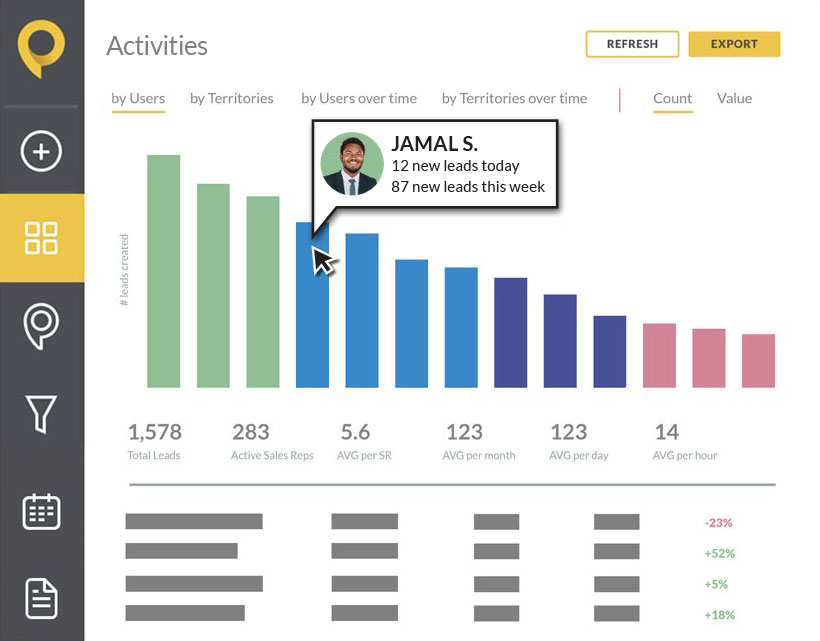
The must-know metrics for field sales managers will show you exactly where your team is spending the majority of their time. The ability to measure sales productivity consistently provides sales managers with actionable data to drive meaningful improvements.
3. Establish A Schedule & Routine
Field sales reps typically have slightly busier schedules than their counterparts in inside sales. The key is to get things done.
Encourage your sales reps to block out time for prospecting, client meetings, and admin work. It’s about prioritizing those items once they’ve laid out what needs to be done. Sales productivity in the field demands a certain level of structure. For example, all of your reps should have a start and end time.
Place significant and long-term clients at the top of your list to ensure they are receiving optimal service. New leads should be prioritized after your existing clients because nurturing your existing relationships for long-term growth is better.
Here are a few sale productivity tips to make prioritizing your schedule easier:
- Choose a Rhythm: Start by scheduling your week with specific tasks assigned to specific days: cold calling on Mondays, warm prospecting on Tuesdays, etc. Keep experimenting with your rhythm until you find something that works.
- Calendar All Tasks, Activities, and Appointments: Put all your commitments on your calendar, breaking your time down into 30-minute blocks. If you need to prepare for a demo tomorrow, schedule it. This also applies to exercise and family time — always include enough life in your work-life balance to make your work worthwhile.
- Implement Time Blocks: Several factors are essential to sales: prospecting, preparation, and the actual pitch. Block time for all three during your day. For example, you may want to make cold calls early in the day (in-person and/or by phone) while you’re fresh.
- Stay On Top Of Emails: Respond to emails and voicemails during non-prospecting times. Empty your inboxes each time you check your email.
4. Create Daily Goals
“Accountability and discipline produce results – when the motivation dissipates these allow you to reach deeper and keep going to realize your full potential” – SPOTIO CEO and founder Trey Gibson.
Setting goals is a simple and easy way to increase sales productivity because they serve as motivation. They give salespeople a sense of direction and a plan of action to hit their target.
There’s only one thing that a sales rep controls no matter what: the number of attempts they make each day. Follow the SMART guidelines to help to create a plan of action. Remember, the focus is on improving sales productivity.
For Example:
- John wants to earn $500 per week.
- John needs 3 sales to earn $500 per week.
- John closes one sale for every 200 attempts made, then…
- John needs to make 600 attempts each week (120/day) to achieve his target
Focusing on these two areas forces you or your team to take the necessary steps to reach your sales goals.
5. Automate Time-Consuming Admin Work
A lot of sales reps’ time goes into admin work. Investing in tools that automate tasks frees up time for sales representatives to focus on closing deals. Tasks that can be automated by investing in a sales engagement platform that will reduce much of this time-consuming, productivity-killing, low-value work.
For example, SPOTIO automates sales outreach, such as follow-up emails and call scheduling, so your team can prioritize future sales opportunities.
6. Prospect Smarter
Prospecting tools such as SPOTIO Sales Intelligence give you the power to filter through more than 200 unique data points (income, owner vs. renter, company size, revenue, and business type, to name a few). You can improve your sales process by identifying the right leads and not wasting time pitching to those that are a bad fit.
7. Assign Sales Territories (Strategically)
Reps go after leads and maintain existing accounts based on the territories to which they are assigned. Territory allocation boosts sales productivity by ensuring that there’s no territory overlap, reps have enough leads to work, and top performers work the biggest accounts.
With territory management software, you can take a more tactical approach to your sales process and assign territories based on criteria other than location. Sales teams can easily be distributed based on more refined criteria, such as industry, business size, and revenue.
8. Visualize Customers on a Map
Customer Mapping software provides reps with sales data in a user-friendly and actionable format.
Here’s how it works:
Your sales team can pull up the map of their territory, select the pin of a lead they’re about to visit, and see all the information about that business or residence. This improves sales productivity because they’re given the power to sort and filter to see things such as pipeline stage and what happened during the last visit.
9. Use Sequences to Boost Pipeline Activity
Getting a prospect to respond, let alone engage with you, takes persistence. If you cut your sales activities short and give up too soon, you dramatically decrease your chances of turning that lead into a sale.
Multichannel sales sequences help ensure leads don’t fall through the cracks due to failing to follow up (and up and up and… up). Enter: Autoplays.
SPOTIO’s Autoplays takes the leg work out of the follow-up so reps can focus on prospecting more while Autoplays sequences handle the engagement.
Users can build templates for multichannel outreach sequences for texts, calls, emails, and visits and set intervals for when the next contact attempt (and channel) should be deployed. All the rep has to do is follow the steps already set by the Autoplays.
10. Plan Sales Routes
Improve your planning sales routes by optimizing a sales rep’s day in the field. Manually planning routes takes hours, but with SPOTIO, you can create multi-stop routes in minutes, know the fastest way to get there, and track mileage.
Smarter routes = less windshield time for reps. Make your team more efficient and boost sales productivity with Route Planning Software.
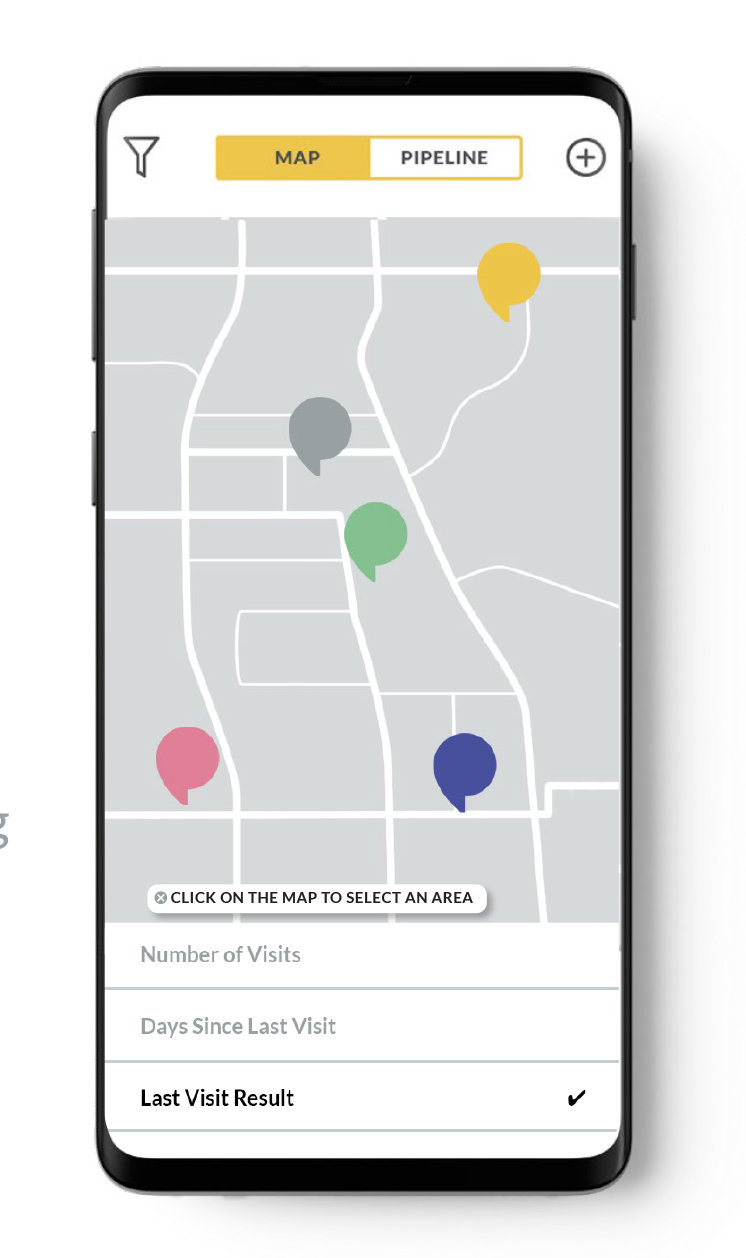
11. Create An Effective Onboarding & Training Plan
Ongoing training is as important as onboarding, but only 45% of employers provide ongoing training to new hires. Equipping your team with the right skills to increase sales productivity should be as great of a focus as providing them with the right tools.
To effectively increase sales productivity, tailor information in an easily memorable way. The more complex the product and process, the more important it becomes to present the information in a way new sales reps can relate to.
12. Treat Salespeople Like Prospects
Your company sends information to potential customers at every stage of the buying journey. Follow that lead and do the same for your sales reps. Salespeople spend about 30% of their day finding or creating content. This wastes a lot of their time and does nothing to help them be more efficient.
Spend the time to learn about what they’re looking for and how you can help them if you want to make a considerable impact on their level of productivity. The content a company sends influences 95% of B2B deals.
Using sales enablement tooling to recommend content and messaging based on the sales situation saves reps time and helps them accelerate deals.
13. Overcommunicate With Your Team
Communication is an essential skill for outside sales managers to possess. Schedules are much tougher to coordinate than they are for inside sales teams, leading to more interactions taking place over the phone and through text messages.
To increase sales productivity, managers should check in with each salesperson to get a pulse on their feelings and performance.
It’s even more important to have a high number of interactions with new hires going through their ramp-up period. Check-ins don’t necessarily always need to be scheduled.
It’s also always a good idea to schedule in-person meetings. The frequency may vary for each team, but the face-to-face setting should promote a more in-depth interaction where training can be tailored specifically to that individual.
One-on-ones are the perfect opportunity to get feedback from your team and determine where there’s room for improvement. Chances are that if one person struggles in an area, others are too.
Always ask what you can do to help them become more productive. The more specific they can be, the better.
14. Get Motivated with an Accountability Network
An accountability network is one or more people to whom you hold yourself accountable each week for getting things done, meeting your deadlines, and achieving the goals you set for yourself.
Knowing you have to report to others is a natural deterrent to not getting things done. It’s easy to make excuses to yourself, but making excuses to peers as to why your sales productivity is slowing down is much more difficult.
15. Establish Lead Qualification / Scoring Frameworks
Spending time on poor quality (unqualified) leads disrupts sales productivity. A scoring framework is a methodology sales and marketing teams use to determine the worthiness of leads by assigning values based on their behavior relating to their interest in products or services.
The “value” of each lead is unique for each organization but can be characterized as the interest shown in the company or their place in the buying cycle. This approach streamlines the sales process and improves sales productivity metrics.
16. Batch Admin Work
Batch work is a technique of grouping the same tasks and not moving on to the next until everything in the current grouping is completed. For example, make 10 calls at once, then do all your data entry and follow-up work for those calls.
Batching activities is a faster and more efficient sales process than doing everything in a one-off linear sequence.
17. Research the Prospect / Account
Do your sales reps currently create their own processes for researching prospects before making initial contact? If so, you should rethink this approach.
Try putting a standardized process in place. This will streamline the discovery phase and make sure they’re gathering the correct information in a short amount of time.
Here’s a 3 step information gathering process to improve sales performance:
- Learn about the company (size, products, employees, etc.)
- Dive deep. Check out their site and learn about their mission. Research them on LinkedIn. Google them. Just make sure you have a holistic view of the organization: who they are AND what they do.
- Find their pains. From what was learned in steps 1 and 2, you can make an educated guess on their needs.
18. Celebrate the Wins
There’s nothing revolutionary here, sales leaders, but it’s important to celebrate wins and hard work. Celebrating success motivates your team and reinforces behaviors that drive higher sales. Sales leaderboards can add to this by encouraging friendly competition. They provide real-time performance updates, inspiring your team to keep improving.
19. Keep Coaching and Developing Your Reps
Be it in sales or life, continuous learning offers a myriad of benefits. However, continuous coaching and educating reps is necessary regarding sales productivity.
Why? Two big reasons:
- The world of sales is constantly evolving. Be it a new selling technique or the emergence of a sales influencer, ensuring reps are up to date with the latest trends requires consistent coaching.
- Staying informed on customer needs. Your product may be the same, but what your prospects are looking for out of it may differ. Study reps’ notes from lost deals to learn new pain points and update your sales strategies. From there, teach reps new messaging that solves the change in consumer behavior.
Field sales reps have the opportunity to learn every day, and it’s up to management to ensure reps are always developing.
Your sales team will benefit by making it a priority to teach and regularly coach. Roping in experienced marketing mentors’ advice can also give you and your team a world of good. Getting inspired by experts can be quite motivational.
Increase Your Sales Productivity with SPOTIO
Prospect Smarter
SPOTIO Sales Intelligence streamlines your day and boost sales productivity by ensuring you’re only spending time with the right prospects. Within your selected territories, reps can pull demographic data points such as credit capacity, homeowner or renter, green living, etc., and spend their time selling to the most viable accounts.
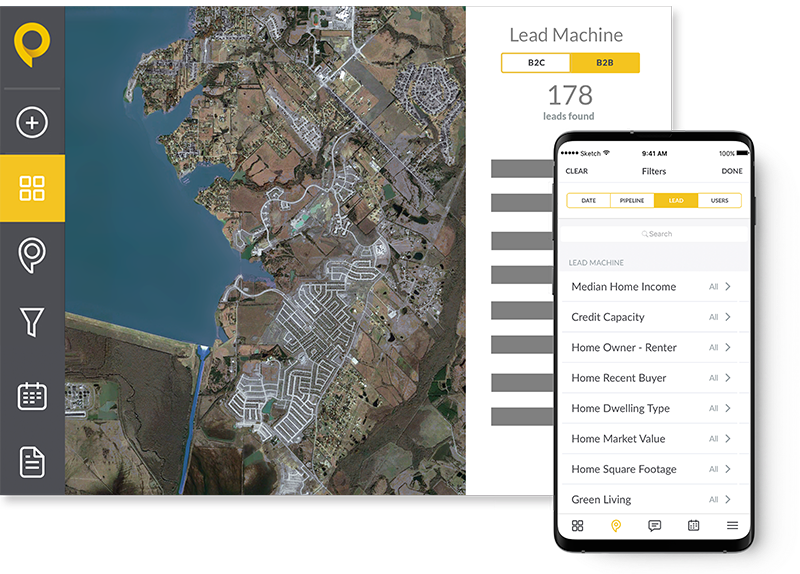
Strategically Assign Territories
Reps can efficiently plan their day with SPOTIO’s Territory Manager. From your mobile device, reps can view their schedule, plan their route from meeting to meeting, and identify any new leads within the area.
When sales managers can strategically assign territories to reps, you can rest assured that sales productivity will soar as sales teams hit the ground running daily.
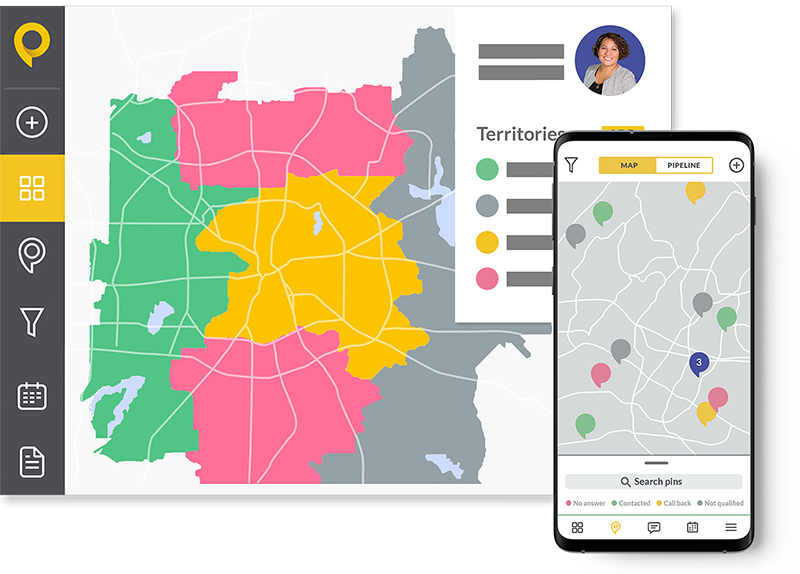
Track Performance at the Rep and Team Levels
Effective management starts with visibility into performance metrics. Leveraging the power of Sales Tracking software, management can track their team’s location and activity from the field. With this data, managers can see where they need to make improvements.
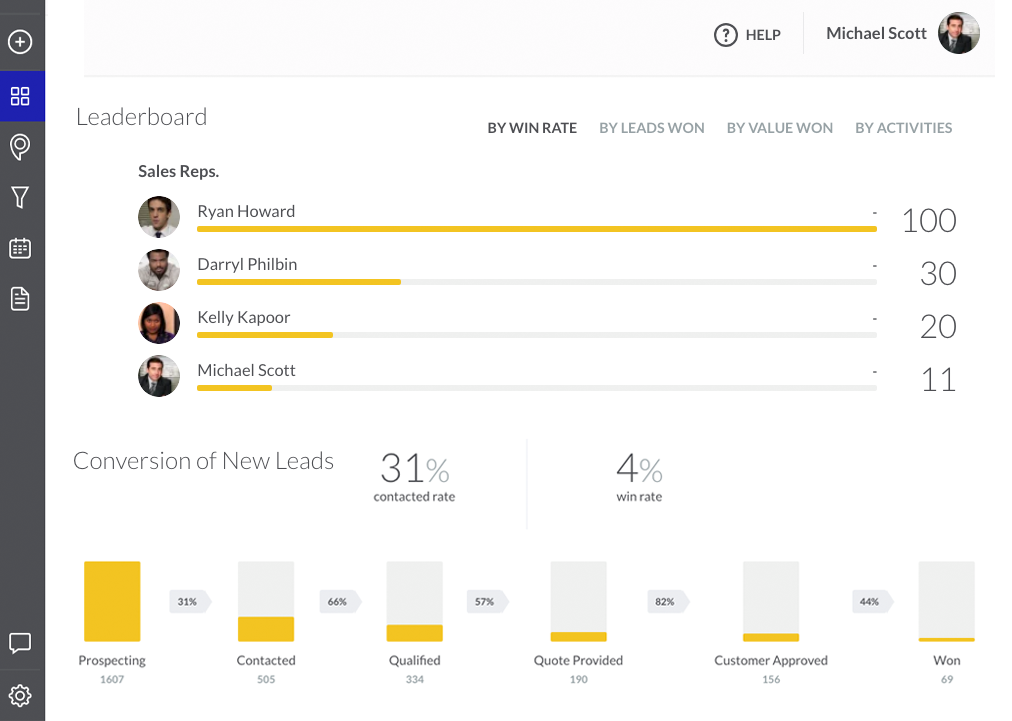
One Final Thought…
Making the most of each day is critical because there’s only so many in a year. When trying to find a way to get the most from your team, consider that happy and engaged employees are more productive and have higher sales numbers.
_____
SPOTIO is the field sales engagement and performance management software that will increase, maximize, and boost sales
Request a product demonstration to discover how SPOTIO can take your sales game to the next level.





